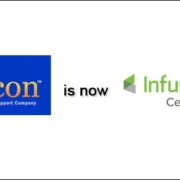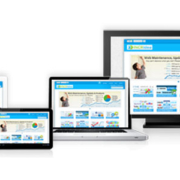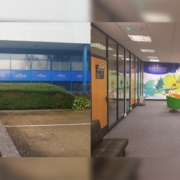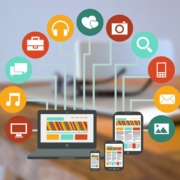With Connected devices projected to grow from circa 9 billion in 2012 to anywhere between 30 and more than 100 billion in 2020, it is no surprise that for the past few years we have seen amazing introductions into the Connected devices /Internet of Things space. Whether it is connected wearables such as smart watches, connected home utilities, new ventures into connected clothing sharing muscle movements, connected health with potential for vital health stats to be shared across the healthcare provision space or our refrigerators monitoring state of food, the potential is astounding (one of the projections shared below).
Focusing on the B2C space, which is the focus of this article the potential runs into billions of dollars for companies to target.


As far as the consumers of connected devices are concerned, there is a lot of thought capital going into the right strategies for identifying and meeting consumer needs such as:
- How to ensure Noise vs Value in the ever crowding connected space
- Targeting of specific functional messages vs whatever the wealth of data through connected can produce
- “Power of Nudge” vs Push to ensure action
- How to ensure ongoing engagement with the product vs the reduction to around 50% or less consumers engaging with the product after the initial ownership love has subsided
However, in this article we wish to focus more on the Shopper rather than the Consumer ( Shopper could be the Consumer or could be different from the Consumer). With billions at play, it is extremely important to observe and identify potential difference in Shopper behaviour and the resulting interventions an organisation might need to activate to ensure it wins with the Shopper at the Point of Purchase. Reminding ourselves of the historical Path to Purchase, a shopper goes through the journey of being aware of a product and service, understands and believes in the proposition and then goes through the journey of finding the product at the “First Moment of Truth” at the Point of Purchase, buying it and then going through the usage experience.

However, if we look at the Path to Purchase of a Connected devices Shopper, although there are a lot of of similarities with the historical Path to Purchase but there are some distinct differences as well. The key one being the need to “Believe” again in the product proposition at the Point of Purchase i.e. a more detailed understanding of features and benefits even if he has gone through that understanding higher up the journey. Therefore, in a way the “Believe” stage in a Shopper’s journey occurs twice. Also, there is an extra step added towards the end of the Journey i.e. “Recommend”. In historical Path to Purchase, the journey ends at “Prefer”, where a shopper might share his preference via reviews etc. However in the Path to Purchase of a connected shopper “Recommend” gets added to the journey as the connected device is an extension of his connected world and being novel/new lends itself to higher potential for recommendation.
Key differences highlighted below:

The Path to purchase highlighted is true for both both offline and online channels. while in a Retail store environment the focus on second “Believe” could take the shape of better info on shelf/demo etc, in an online environment it could be similar to better A+ content .
Having had a view on a Shopper’s path to purchase in a connected devices world, it is also important to ensure all potential Shoppers across all potential Channels and Customers are targeted and value realised for the organisation across the value chain. Asbicon’s proprietary methodology ” GAIN & WIN” provides that platform to an organisation to approach this in a structured way:

Let us assume that a Company A is launching a connected device in the Health care space. The first focus it needs to have is to “Get new customers” to list its new connected product (Customer here refers to an entity that sells a Company’s products to Shoppers. Walmart, Tesco, Amazon, Carrefour, 7-11, Big Bazaar etc are examples of customers). It might be that Company A needs to look for totally new customers or it could also be that it has been dealing with a particular customer in other categories before but with regards to this new category on this specific connected product, it will be a new customer.
The “G” stage in Asbicon’s “GAIN & WIN” methodology provides for this focus to “Get New Customers”. It starts with a sub- stage 1 of “Channel, Customer & Consumer landscape mapping” which allows for understanding the potential Channels and Customers that could be planned for/targeted. Again, it could be new Channels or the Channels Company A is already operating in. In the case of a connected health device that Company A is looking to launch, it might be that it identifies new channels such as GP surgeries in UK, Private Doctor practices in India or pharmacy chains in South East Asia as new channels. Likewise, assuming that Company A has other basics in place for Selling & Distribution capability & Management, other sub-stages of the primary “G” stage which are relevant will play a role towards the objective to “Get new Customers” and subsequently sub-stages within the other 3 primary stages of “A-Augment Customer Spend”, “I-Increase Frequency of Purchase” & ” N-Nurture & Grow profits” which can be instrumental towards a successful launch of this connected health device will play their respective roles. These are summarised below:
“G- Get New Customers”
- Channel Customer & Consumer Landscape Mapping
- Understanding the Customer, Shopper & Consumer
- Structured Selling framework
“A- Augment Customer Spend”- Focusing on increasing Shopper spend with the Customer, leading to increase in Customer’s spend with Company A
- Understanding the role of Point of Purchase drivers
- Executing Point of Purchase drivers with success
“I- Increase Frequency of Purchase”- Focusing on increasing Shopper’s purchase frequency with the Customer and thereby leading to increase in Customer’s purchase frequency with Company A
- Basic Category Management
- Shopper Marketing at Point of Purchase
- Role of Promotions
- Loyalty Management
“Nurture & Grow Profits”- Through better value chain Management
- Portfolio & Mix Management
- Advanced Category Management
- Trade Investment Management
- Role of Right Analytics
Above assumes that basics of Selling capability & Management are in place. In case, a refresh might be necessary on those, there are other sub-stages that can be activated.
It is clear that potential with connected devices for consumers is huge. An understanding of key differences in shopper behaviour in this category vs other categories and a structured approach towards making this category a sustainable and scalable success could be a huge opportunity for creating and realising value.
Team Asbicon
(Asbicon is a Consumer Goods & Services specialist firm focused on “Growth Solutions for Aspiring Brands”. Asbicon enables this through its 5 verticals of Research, Assisted Advisory®, Capability Development, Data services & Design services providing Retail & Distribution effectiveness to its clients)







